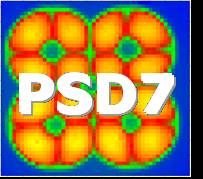Speaker
Dr
Kazuhiro Nakazawa
(Institute of Space and Astronautical Science / Japan Aerospace)
Description
Large area imaging spectrometer with good energy resolution based
on double-sided Si strip detector (DSSD) is a key technology for a
new generation of Gamma-ray astronomy. It is well suited as the
scatterer detector of semiconductor Compton telescopes (SCTs)
working at sub-MeV to MeV band. High energy resolution is of
particular importance because it ensures better angular resolution
and higher detection sensitivity, as well as wider energy range down
to 100 keV. We are developing DSSDs and read-out ASICs with special
care on the energy resolution. Recently, we developed a system of a
2.56 cm wide DSSDs (from HPK) read-out with low-noise analog ASICs,
VA32TA (from Ideas), with a good energy resolution of 1.3 keV (FWHM)
for 60 keV and 122 keV at 0 C (H. Tajima et al. IEEE 2004). The
DSSDs are used in our prototype SCT, combined with CdTe pixel
detectors, and a Compton reconstruction is achieved at an energy as
low as 81 keV thanks to its high energy resolution (S. Watanabe et
al. IEEE 2005).
In this work, we present our results on the new larger 4 cm wide
DSSDs. This device is based on the 2.56 cm DSSD and designed to
improve the detection area by a factor of 2.25 with minimum
degradation of energy resolution. The thickness of the detector is
300 um. The strip pitch is 400 um with a gap of 100 um, and the
strip length is 38.4 mm. There are 96 strips each on p and n sides
implanted on orthogonal direction. The p-strips of the DSSD are
connected directly to three ASICs, VA32TAs. The n-strips are
connected via RC filter chip for AC connection (RC-chip) to another
three ASICs. A bias voltage of 100 V is applied from the RC-chip.
The system works well and a fine image with 241Am source is
obtained. When operated at a temperature of -10 C, we obtain an
energy resolution of 1.7 keV (FWHM) for the p-strips for 59.5 keV
gamma-rays. Detail of this detector, read-out system and their
performance will be addressed
Primary author
Dr
Kazuhiro Nakazawa
(Institute of Space and Astronautical Science / Japan Aerospace)




